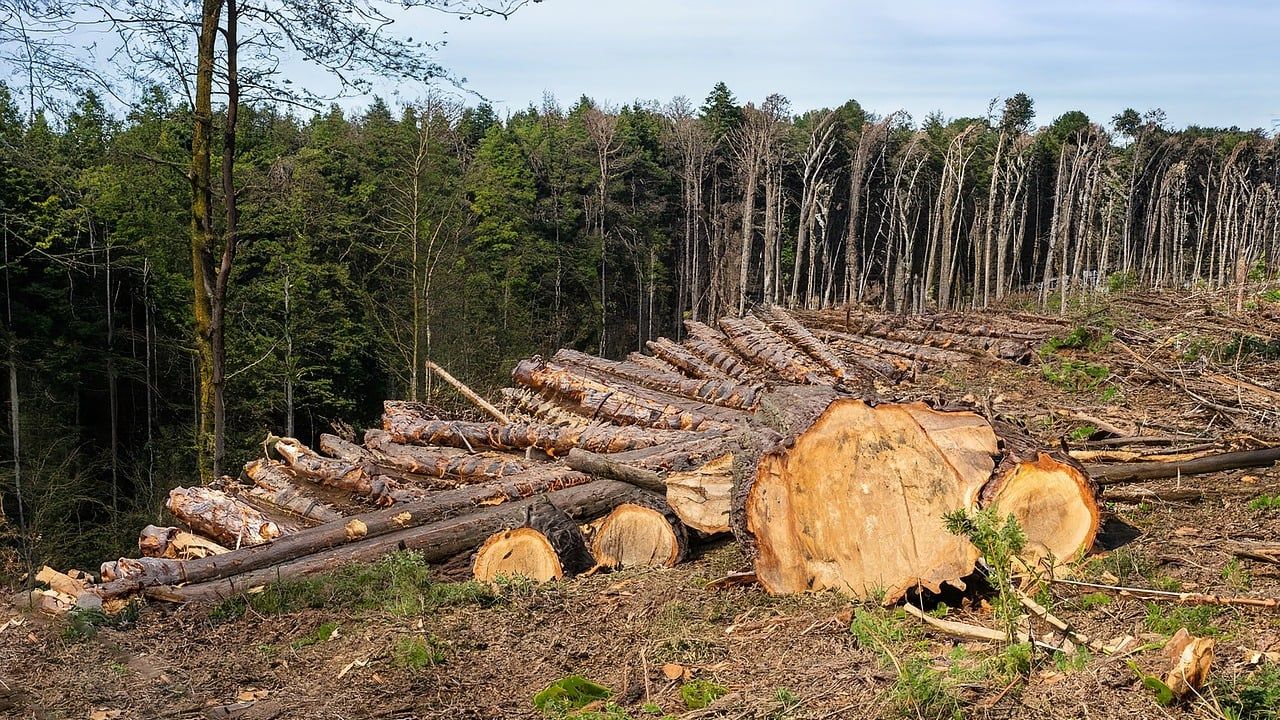We take a lot of things for granted… Water, electricity, food, and the trees of the natural forest.
But we’re not promised an endless supply of trees. The deforestation industry obviously disagrees. From Oregon to Ghana, you can hear the deafening boom of a tree falling and its history and biodiversity power with it.
You might think, ‘Won’t trees just keep growing back when deforestation occurs?’ If it were only that easy.
Trees have long been the object of man’s desire to obtain wood for fuel, manufacturing, and construction, but at what cost?
Let’s look at the facts – the deforestation statistics, the reasons why, and the frequency of occurrences – to see if we should keep looking the other way when something so majestic is snapped out of existence.
Top 10 Most Devastating Stats
- In 2020, 25.8 Million Hectares of Forests Were Lost
- 60% of Modern Diseases Have Emerged Due to Deforestation
- Only 18% of the World Forests Are Protected from Deforestation
- Cattle Ranching, Soybean Farmers, and Palm Oil Plantations – 40% of Deforestation
- Each Minute 2,400 Trees Are Cut Down
- 20% of Greenhouse Gas Emissions Occur Due to Deforestation
- In2022, More Than 36 Million Trees Were Lost by California
- Since 1970, 17% of the Amazon Rainforest Has Been Cut Down
- Almost 1,000 Plants and Animal Species Are Becoming Extinct Annually
- Brazil Reduced Amazon Deforestation Rates by Two-Thirds
Understanding the Deforestation Crisis
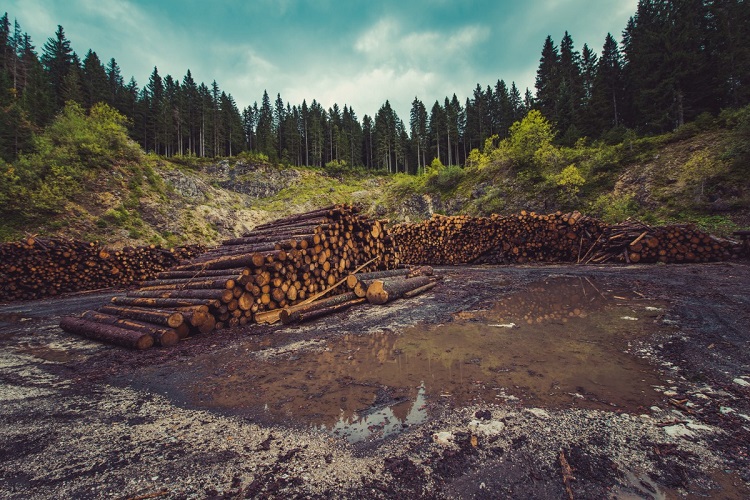
It might seem a bit simplistic, but there’s a point… What constitutes a forest? Oxford says it’s “a large area covered chiefly with trees and undergrowth.” The tricky part is there are tweaks in it depending on if those associated with one of the mega-industries involved in deforestation are explaining it or if it’s used by “treehuggers.”
EduGreen defines it as; “a complex ecosystem consisting mainly of trees that buffer the earth and support a myriad of life forms.”
The Environmental Protection Agency (EPA) defines it as; “land with at least 10% of its surface area covered by trees of any size or formerly having had such trees as cover and not currently built up or developed for agricultural use.”
No matter the words used, we’re losing our forest ecosystems quickly.
Stats about Deforestation
Deforestation, the silent eraser of our planet’s green lungs, has a tale told best through the stark numbers that chart its progress. Let’s delve deep into the statistics that underscore the urgency of preserving our treasured forests.
In 2020, 25.8 Million Hectares of Forests Were Lost (Washington Post)

This figure represents a significant ecological challenge and calls for urgent attention and action.
Tropical forests saw an increase of 12 percent in deforestation between 2019 and 2020. This tropical primary forest loss was proven by satellite coverage.
Over the Decade since 2010, the Net Loss in Forests Globally Was 4.7 Million Hectares per Year (FAO)
Although net forest loss and deforestation aren’t the same, since the net loss includes forest gains in a given period, deforestation rates still ranked much higher.
Almost 31% of the World Is Covered by Forests, and Only 18% of the Forests Are Protected from Deforestation (FAO)
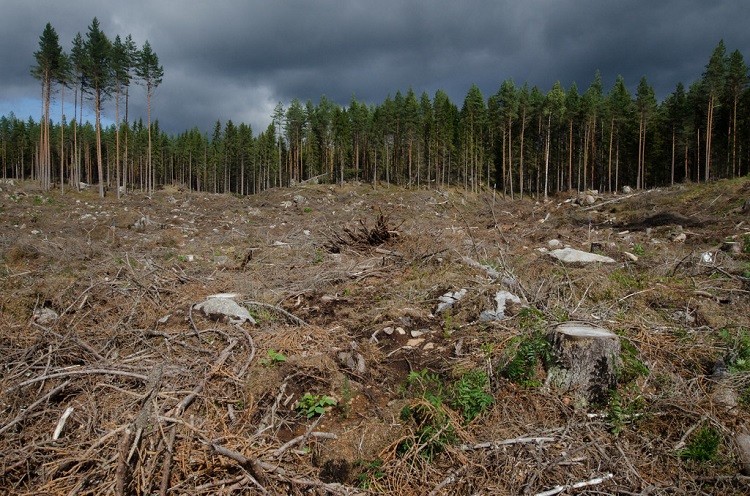
Only 18% of the forest area is protected with national parks, conservation areas, and game reserves. If you’d like to get involved in the solution, there are a myriad of things that can be done to protect them, which we’ll talk about. Since only a little more than half of our forests have laws for protection, we’re skating on thin ice.
Cattle Ranching, Soybean Farmers, and Palm Oil Plantations Account for Almost 40% of Deforestation (FAO)
We strive to provide you with facts in every article we publish. The fact is man’s greed for more of everything is killing our forests. There’s no getting around it.
Agricultural expansion negatively impacts ecosystems.
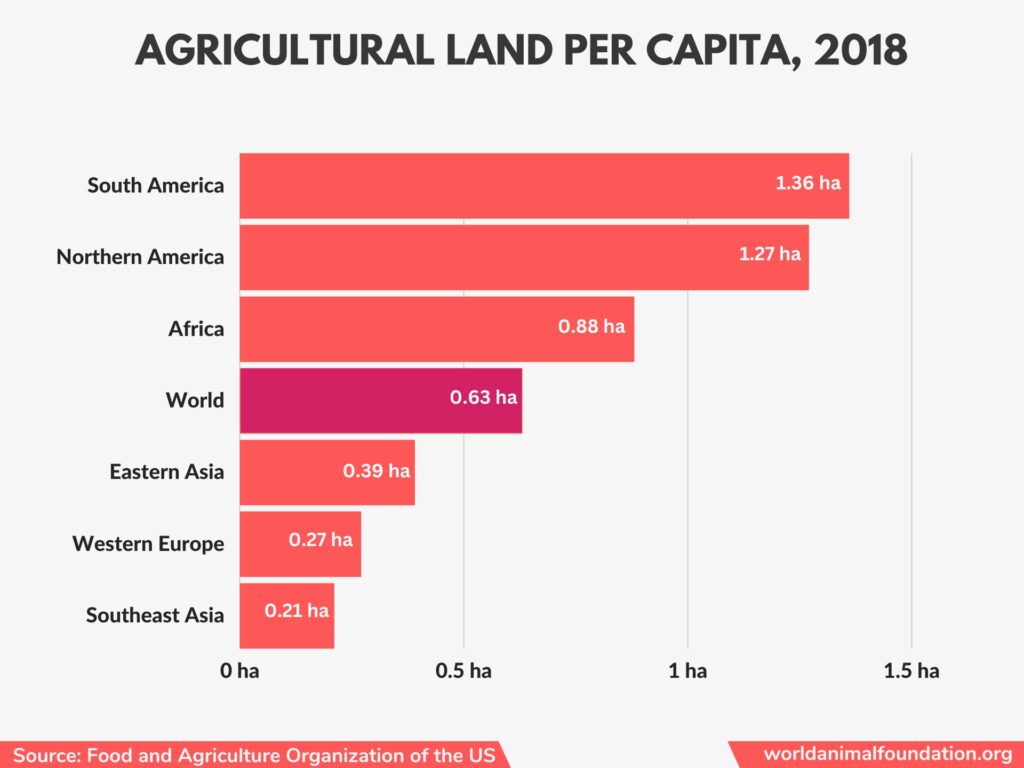
Wood Production Causes around 380,000 Hectares of Deforestation Annually in Key Countries; the Actual Number Is Likely higher (UCSUSA)
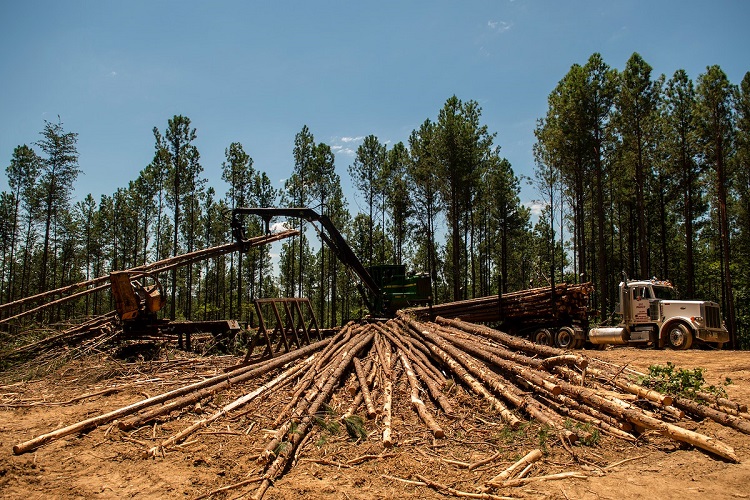
This number, although likely to be much higher, is still devastating. I’ve had a “paperless” system in my work environment for four years (I’m a full-time writer). There have only been a few times that I’ve seriously needed a printer, but that was easily remedied.
Only 2% of the Global Soybean Production Is Certified Sustainable (Forest Declaration)
The market share of certified palm oil saw an increase from 2008 to 2013. However, the share of soybeans-certified production (2%) and the area of certified forests providing the paper industry had stayed constant since 2008 without notable increases.
But there’s good news, according to the Roundtable on Responsible Soy: In 2020, 4.6 million tons have been RTRS certified.
“The Round Table on Responsible Soy (RTRS) is an initiative formed by multiple parties, including soy producers, retailers, and civil society organizations, to promote sustainable soy production and trade on a global level.” – Food Chain ID
Since 1990, More than 420 Million Hectares of Forests Have Been Lost (FAO)
There has been some improvement. The rate of deforestation has decreased in the last 30 years. In the 90s, 16 million hectares per year were deforested.
From 2015 to 2020, the number decreased to around 10 million hectares per year.
Each Minute, 2,400 Trees Are Cut Down (University of Michigan)
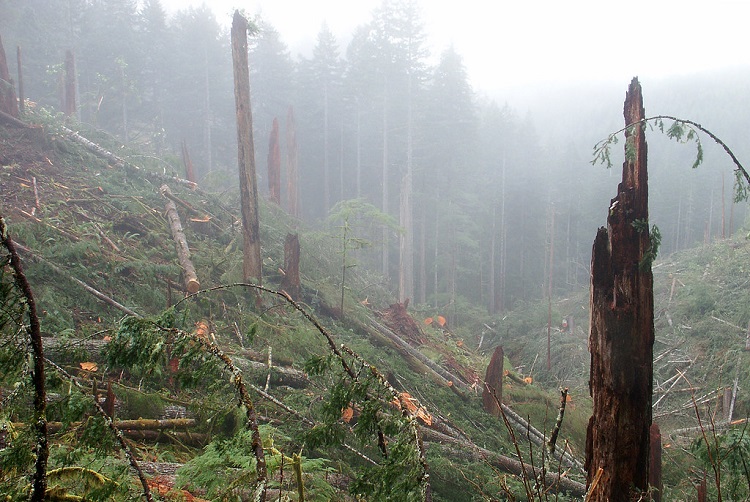
Between 15 to 18 million hectares of forest are destroyed each year – about the size of Belgium. When you see the number taken down to minutes, the situation is catastrophic.
20% of Greenhouse Gas Emissions Occur Due to Deforestation (EDF)
China and the US are the world’s top two offenders of emitting annual global greenhouse gases. Indonesia and Brazil are close behind them.
Every Year, 14,800 Square Miles of Forest Are Lost, Roughly Equal to the Size of Switzerland (Tutorialspoint)
We’re losing our forests by the size of countries now. Yes, the numbers have decreased since the 90s, but that fact doesn’t make up for the damage still being done.
60% of Modern Diseases Have Emerged Due to Deforestation (National Geographic)
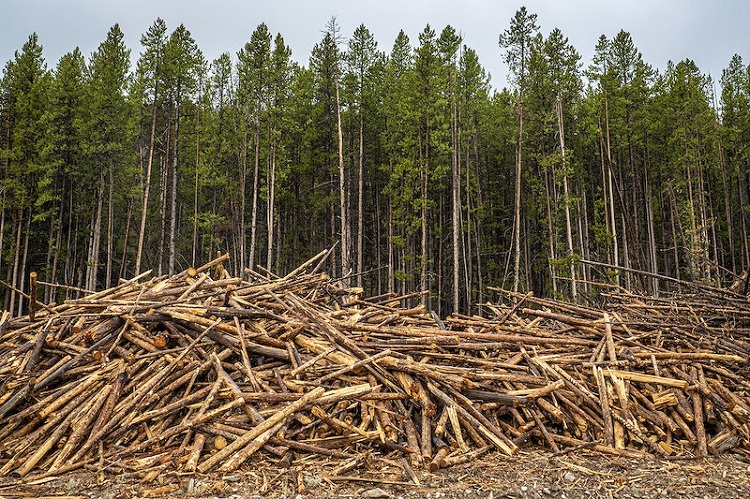
“A major cause of viruses’ jump from wildlife to humans is habitat loss, often through deforestation.” – NG
When wildlife has nowhere to go/live, they infiltrate human-populated areas, bringing with them whatever illnesses they have.
Around a Third of All the World’s Tree Species Are Threatened with Extinction (Phys)
Almost 17,500 tree species are threatened with extinction. Brazil has the largest number of tree species (for now), unique to them at 4,333 in 2017.
Forests Are the Source of Livelihood for 90% of the Underprivileged Community (The Borgen Project)
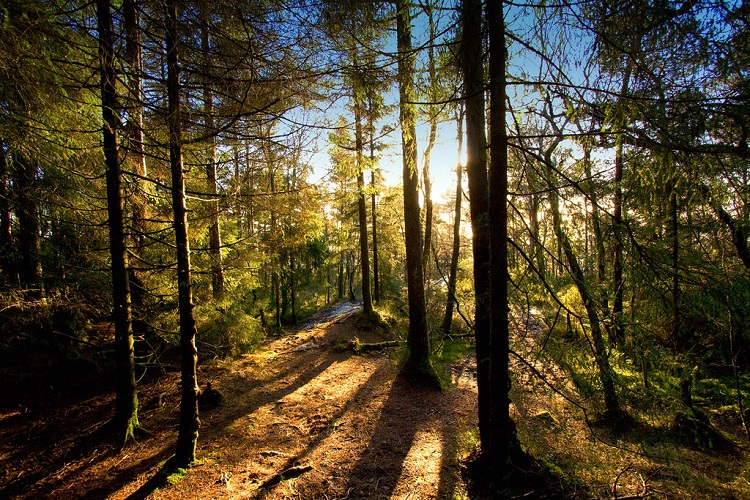
Almost 90% of the people living in poverty-stricken areas depend on forests for their livelihoods. The indigenous people of Brazil depend almost solely on trees for their livelihood. But since 1978, Brazilian loggers, cattle rangers, and farmers have cut down 289,000 square miles of rainforest.
Space is necessary to farm, but achieving balance must be worked towards rapidly.
Illegal Logging Is the Major Reason behind 50% to 90% of Deforestation in the Amazon, Central Africa, and Southeast Asia (Federation of American Scientists)
Illegal logging’s significant role in 50% to 90% of deforestation in crucial regions demands robust international efforts to combat this environmental threat.
The Canadian government lists five major ways to keep illegal logging to a minimum, and the world should take note. More laws and oversight are a good start, but they need to be paired with concerned and relevant parties who can make and enforce the necessary changes.
Rainforests Deforestation Statistics & Facts
Diving deep into the heart of our planet’s most vibrant ecosystems, rainforests are a symphony of life and diversity. Yet, the alarming rainforest facts and statistics surrounding their deforestation reveal a story of fragility and urgency.
Let’s unravel these numbers to understand the true extent of the challenge we face.
By 2030, Only 10% of the Rainforests Will Be Left on the Planet (the World Counts)
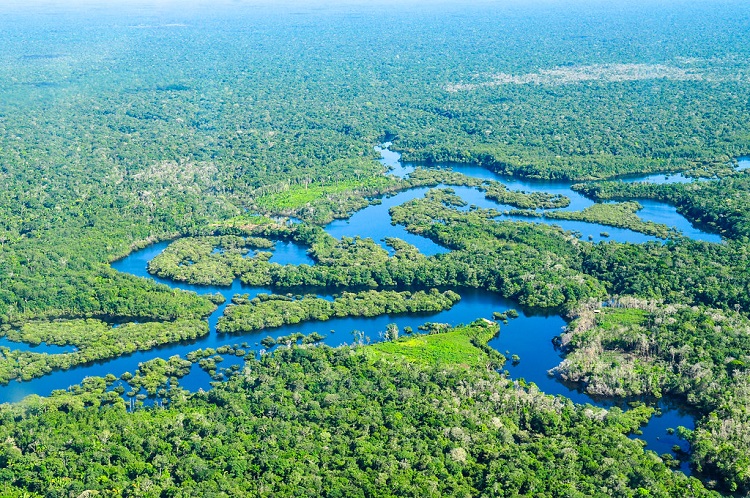
If we don’t stop deforestation now, then we may lose all our forests in the next 100 years. Many industries need to be shaken up and especially the agriculture sector. Like it or not, the meat industry needs to make major changes to save our planet.
Beef is the number one cause of deforestation. Livestock needs land/space, and since our world’s people consume meat like it’s air, forests are destroyed to fill gluttonous desires.
In 2021, Brazil Increased Its Greenhouse Gas Emission by 9.5% (Reuters)
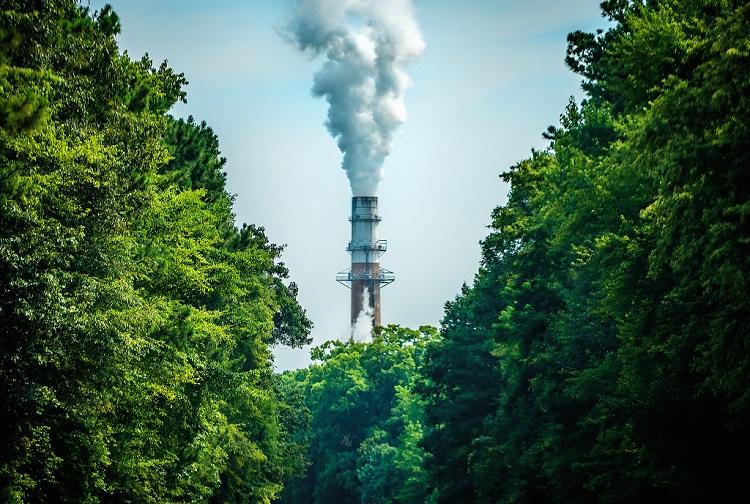
Brazil was second only to Russia in 2020 for the highest square miles of tree cover lost at 13,000. This explains a lot.
In 2022, 4 Million Hectares of Tropical Forest Were Lost (WRI)
In 2020, 12 million hectares of tropical forest were lost. While the rest of the world was hiding from the pandemic, deforestation was going strong. But some countries are stepping up. According to 2022 studies, an average of 4 million hectares of tropical forests were lost, with the pandemic year seeing around 12 million hectares deforested.
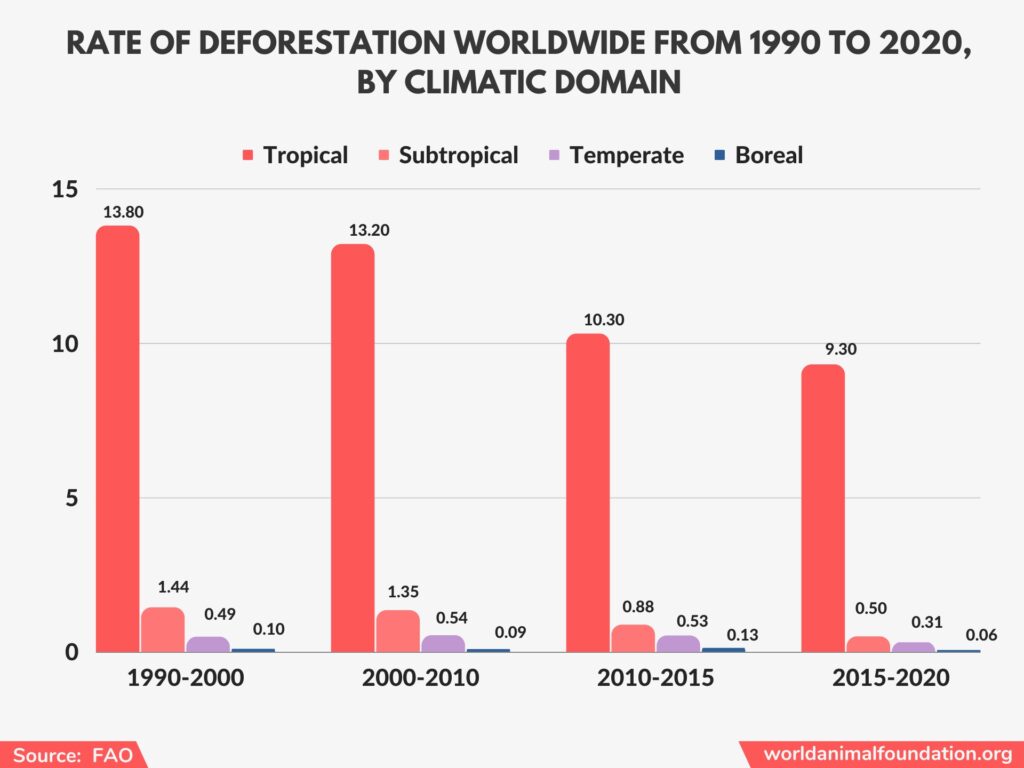
Indonesia ramped up its fire prevention and monitoring and…
Under a Green Growth Compact launched in 2016, government agencies, NGOs, and the private sector have been coordinating efforts ranging from securing village rights to forests to protecting high-value forests within oil palm plantations. – World Resources Institute
80% of the Tropical Forest Loss Is Attributed to Agricultural Land (Our World in Data)
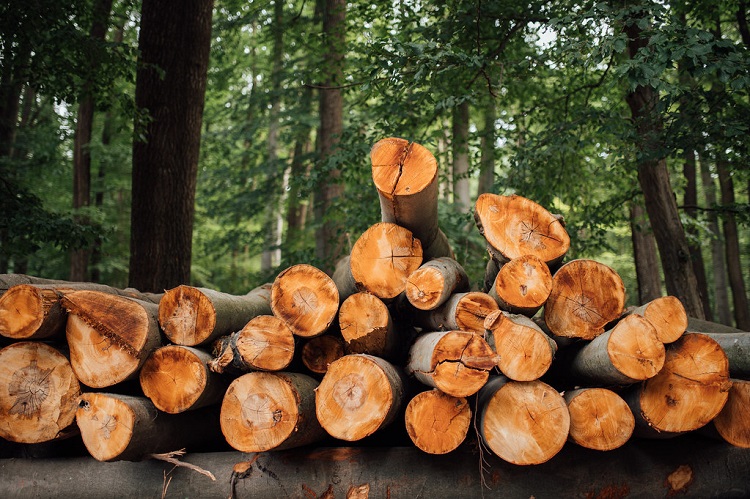
Agriculture contributes to 70-80% of tropical deforestation. Almost all of our world’s tree loss is due to man taking advantage of something we need to be more mindful of ingesting – meat.
The red flags have been raised, the data is there, and it’s time for each one of us to do our part to minimize deforestation by decreasing our meat consumption.
Within 77 Years, It Is Predicted All Rainforests Will Be Gone (the World Counts)
We’re not talking centuries. If we’d like our children and grandchildren to feel secure in a world full of forests and the many benefits they bring, we must pledge to them we’ll make significant lifestyle changes.
The Rate of Carbon Dioxide Emissions in the Amazon Rainforest Has Increased Rather Than Been Absorbed (The Guardian)
Mature trees store carbon and, as such, can only absorb it when it’s alive. As they’re destroyed, it is released into the atmosphere. Amazon forest has started to emit more Carbon Dioxide than to absorb it.
The Amazon rainforests are also destroyed by wildfires (even the wetlands), and due to severe inclement weather – climate change – in the last decade, this is also a major cause for concern.
Haiti’s Rainforests Are Expected to Be Lost in the Next 20 Years (Earth)
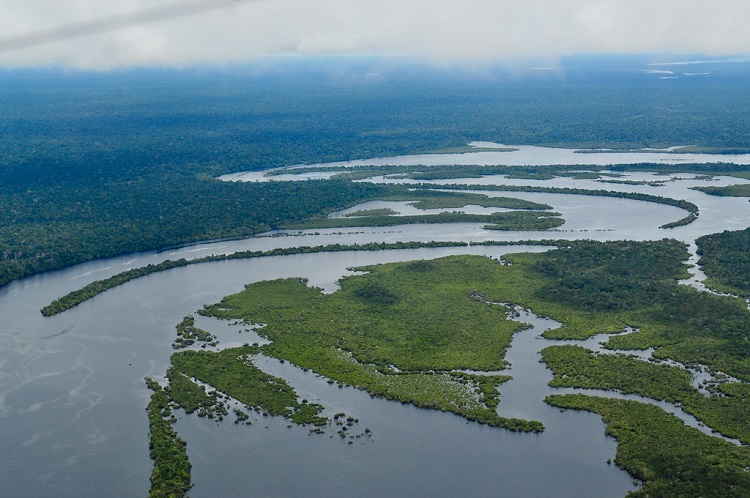
Forty-two of Haiti’s 50 largest mountains have lost all primary forest cover. They are experiencing mass wildlife extinctions, and satellite imagery tells a grim story.
The Ingredients of 25% of Western Drugs and Pharmaceuticals Come from Rainforests (South American vacations)
Our forests could be the difference between life and death for you and me. They’re that important.
25% of All Chemotherapeutic Drugs Come from the Rainforest (Mongabay)
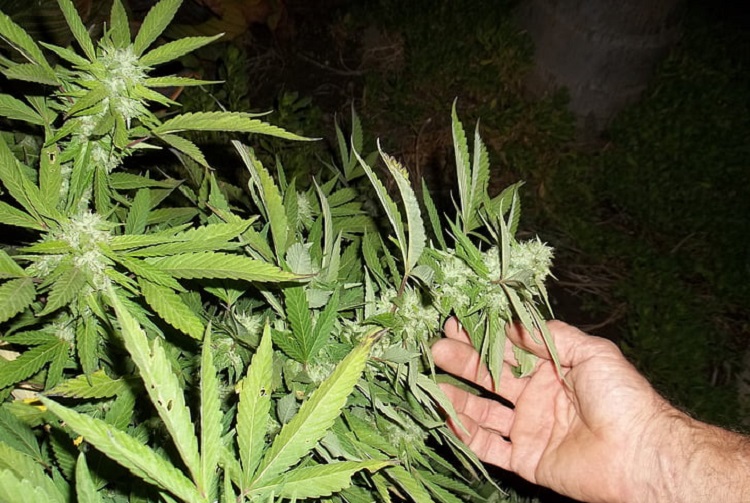
The US National Cancer Institute reports that 70% of plants with anti-cancer characteristics are found only in the rain forest. Everything and everyone is connected in our world.
75% of Tropical Rainforests Have Lost the Ability to Properly Recover from Wildfires and Drought (Phys)
Almost 75% of the Amazon rainforest shows signs of loss. We can’t expect Mother Nature to keep giving and giving as we take and take from Her. It’s time for us to give back. Keep reading for ways to do just that.
Deforestation in the US
From the expansive woodlands of the Pacific Northwest to the dense forests of the Appalachians, the US is home to a vast array of forests. However, the story of deforestation in the nation is a complex tapestry of historical events, modern demands, and environmental concerns.
Let’s dive into the intricacies of how the American landscape has been and continues to be, reshaped.
Almost 8% of the World’s Forests Are in the US (US Forest Service)
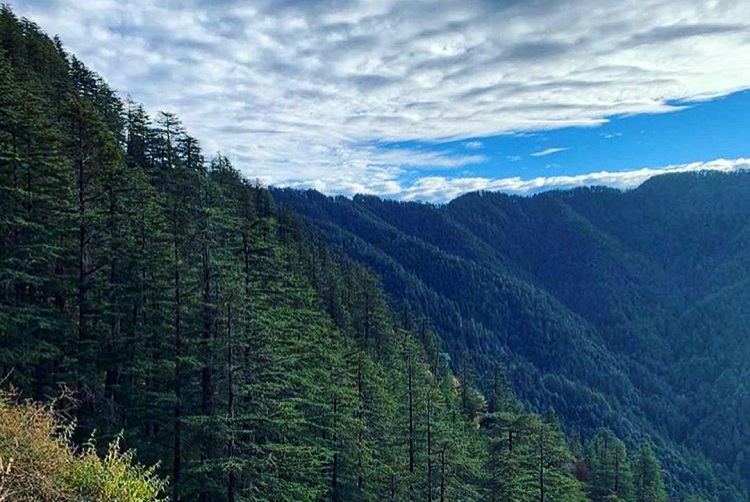
About 304 million hectares of land is covered by forests in the US, which make up 34% of the land area.
There are three countries with higher numbers:
- Russia has 20.1 percent of the world’s forest area
- Brazil 12.2
- Canada 8.5
In2022, More Than 36 Million Trees Were Lost by California (NPR)
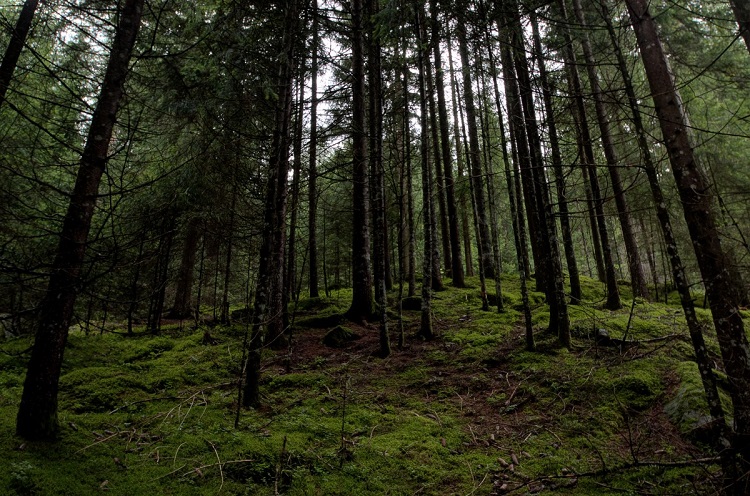
What are the reasons behind deforestation? According to One Tree Planted, the top five are:
- Industrial agriculture (Meat production)
- Timber logging
- Mining
- Expansion and infrastructure
- Climate change
75% of the US Virgin Forests Have Been Destroyed by the US Itself in the 1600s. (Toner Buzz)
During the 1600s, the US contributed to the destruction of approximately 75% of its virgin forests, largely due to widespread logging and land clearing for agriculture and urban development.
Before the American colonists/settlers arrived, about 1 billion acres of forests covered half the land (including Alaska). Our forefathers stopped at nothing, including obliterating virgin forests, to make progress in building roads, homes, and a country.
Little did they know, their efforts greatly contributed to what has become a nationwide emergency.
From 2001–2019, the US Lost 973,000 Square Miles of Forest (Toner Buzz)
Florida, Alaska, Alabama, Georgia, and Mississippi suffered the most deforestation loss. – Toner Buzz
In 2022, California recorded there were 36.3 million trees destroyed from drought, insects, and disease.
From 2001 to 2021, the US Lost 44.3Mha of Tropical Tree Cover, Equivalent to a 16% Decrease in Tree Cover (Global Forest Watch)
Right before that, in 2000, 29% of the country was covered by trees. Between 2001-2021, these eight regions were responsible for global tree cover loss in the US:
- Alaska
- Georgia
- Alabama
- California
- Mississippi
- Oregon
- Florida
- Texas
The US Forestry Services Supports More than 1 Million Direct Jobs (Forest2market)
That’s over 55.4 billion dollars in direct payroll. There are so many other areas for renewing our natural resources these employees could do instead.
Tropical Deforestation in South America
South America, a land of vibrant cultures, iconic wildlife, and unparalleled biodiversity, is also home to some of the planet’s largest and most critical tropical rainforests. However, the specter of tropical deforestation looms large over this continent, driven by various factors from agriculture to urbanization.
Journey with us as we explore the magnitude, implications, and root causes of forest loss in this ecologically rich region.
Tropical rainforests are home to half of the plants and animal species worldwide (Khan Academy)
That’s half of ALL plant and animal species worldwide. Our forest world can’t afford to take the hits it has already taken, much less continue to run head-on into the wrong lane.
Since 1970, 17% of the Amazon Rainforest Has Been Cut Down (VSM)
The Amazon Rainforest covers an area of approximately 5.5 million square kilometers, spanning several South American countries, including Brazil, Peru, Colombia, and others.
It is often referred to as the “lungs of the Earth” because it produces a significant portion of the world’s oxygen and absorbs large amounts of carbon dioxide. But, unfortunately,17% of the Amazon forest has already been cut down.
Brazil has the largest portion of the Amazon rainforest in it – over 1.5 million square miles. Much of it was obliterated in 2021.
In Latin America, 54% of Natural Forest Above Ground Carbon (AGC) Loss Has Occurred (IOP Science)
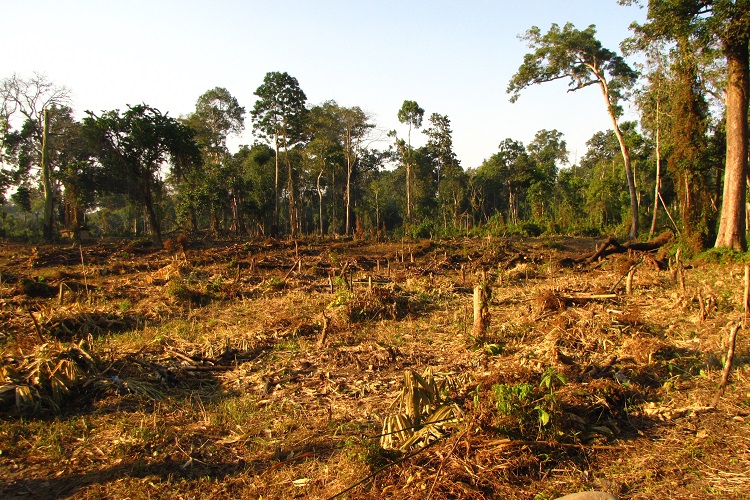
Latin America experienced 54% of natural forest AGC loss, with highest being experienced by Brazil. Latin America lost nearly 100,000 square miles of forest between 2001 and 2010. That’s an area larger than the state of Oregon.
Approximately 218,000 Square Miles of Forest Were Lost in Brazil from 2001 to 2019 (Toner Buzz, Global Data)
“In 2021, the deforestation rate of the Legal Amazon region in Brazil reached the highest level in 15 years. It was estimated that more than 13,000 square kilometers were destroyed that year, the highest figure reported since 2006.”
Brazil took the lead in deforestation, with D.R. Congo following right behind. Here is an overview of global tropical forest loss:
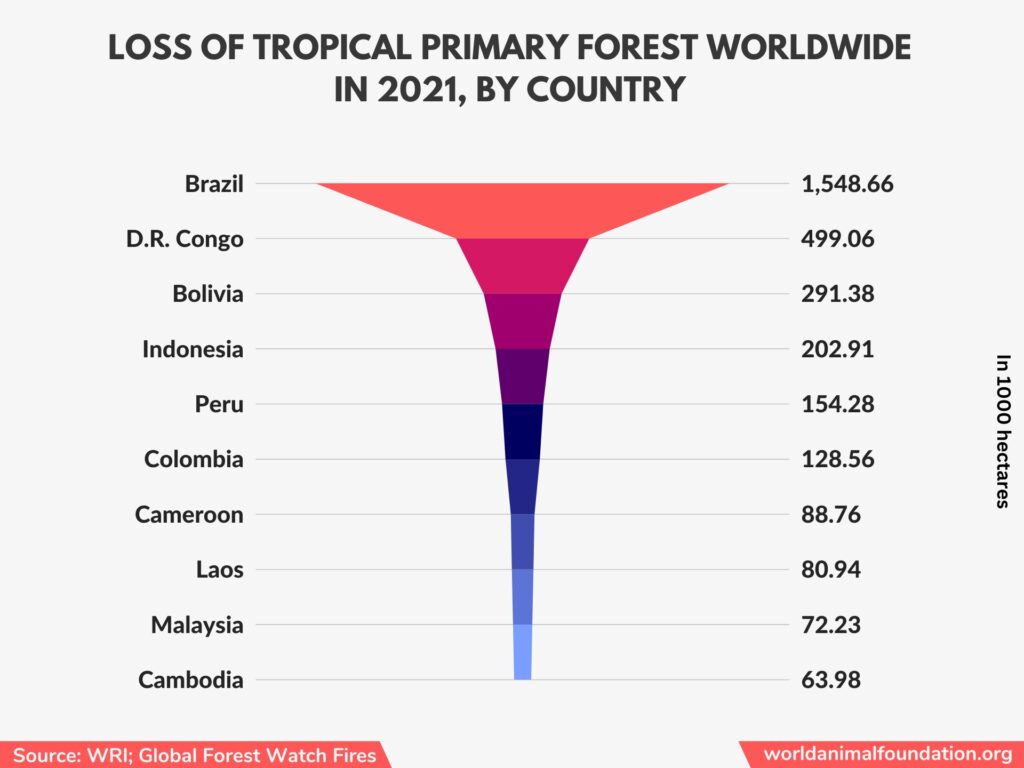
Tropical Deforestation in Indonesia
Indonesia, an archipelago of over 17,000 islands, boasts a unique blend of ecosystems, from lush rainforests to peatland habitats. Yet, this verdant paradise faces pressing challenges from tropical deforestation, threatening both its biodiversity and indigenous communities.
Let’s delve into the intricacies of Indonesia’s forest depletion, understanding its drivers, impacts, and the fight to preserve its green heritage.
In 2018, Almost 440,000 Hectares of Forests Were Cut Down in Indonesia (WRI)
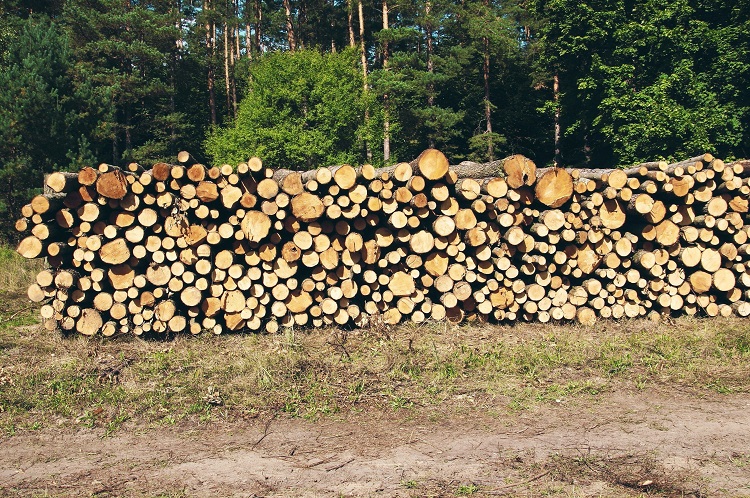
As of 2000, 85% of Indonesia was tree cover. With that being said, they were also one of the top tropical countries to appear to be moving forward in the war against deforestation in and around 2018.
From 2000 to 2012, 15 Million Acres of Indonesian Burial Forests Were Lost (Scientific American)
This is when it gets really personal to entire cultures. If losing our wildlife and biodiversity and large swaths of pharmaceutical advances isn’t enough, ancestral grounds are vanishing.
In South Asia, 88% of the Rainforests Have Been Destroyed (Nature)
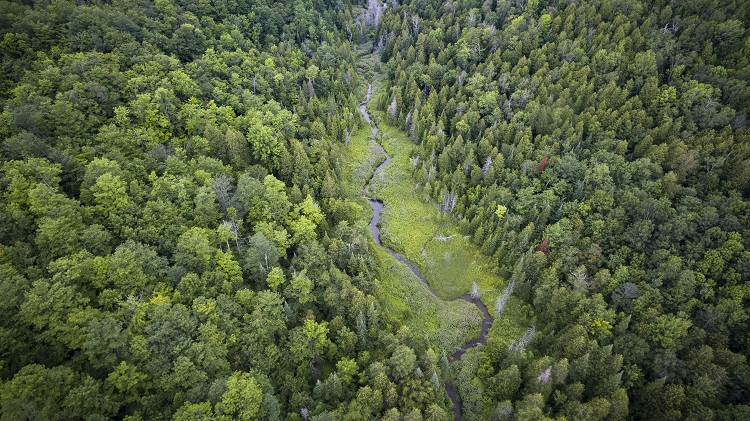
More than half of Southeast Asia’s original forest cover has been lost. If the trajectory continues, over 40% of the region’s biodiversity will become extinct by 2100.
Since 2016, Indonesia Has Reduced Its Deforestation Rates (UNREDD.org)
The rate of forest loss declined from 2015-2018. Currently, they have a permanent forest and peatland moratorium.
Deforestation Effects on the Environment
Deforestation, more than just the act of clearing trees, casts a long shadow on our environment. From altering local climates and endangering wildlife to disrupting water cycles, the removal of forests has repercussions that echo globally.
Let’s explore the multifaceted effects of deforestation and how it reshapes the very fabric of our natural world, hinting at a future we might inherit if left unchecked.
Due to Deforestation, Almost 1,000 Plants and Animal Species Are Becoming Extinct Annually (CNN)
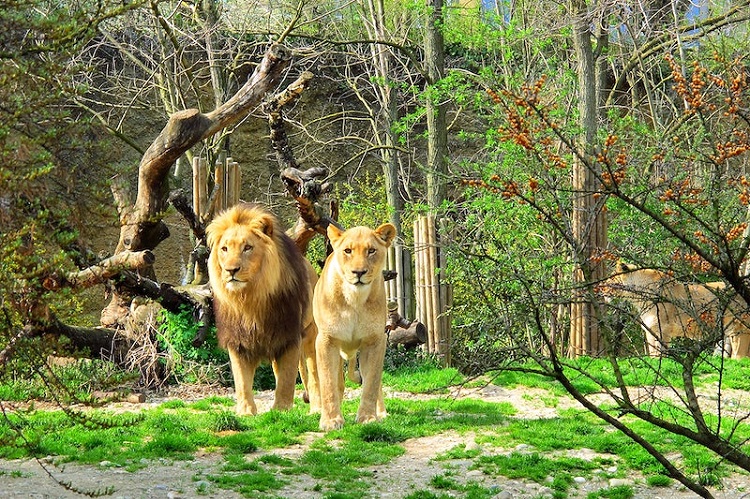
Climate change and loss of habitat are the largest contributors to this statistic. It is projected that if deforestation continues at its current rate, 1 in 3 plants and wildlife will no longer exist.
The consequences of species extinction extend beyond the loss of individual plants and animals. Every species plays a unique role in the intricate web of life, contributing to ecosystem functioning, pollination, seed dispersal, nutrient cycling, and other critical ecological processes.
The disappearance of species can disrupt the balance of ecosystems and have cascading effects on other species, leading to a decline in overall biodiversity.
Almost 1 Million Animals Are in Danger of Extinction Due to Deforestation (United Nations)
According to the UN, almost 1 million animal and plant species are facing the danger of extinction due to deforestation.
In 2016, more than 9% of all domesticated breeds of mammals used for agriculture/food had become extinct. At least 1,000 more breeds are still threatened. Logging is killing off our creatures.
Due to deforestation, up to 28,000 species face the risk of extinction within the next 25 years.
Approximately $2 Trillion to $4.5 Trillion of Biodiversity Loss Annually Due to Deforestation (The Solutions Journal)
Deforestation causes a loss of $2 trillion to $4.5 trillion. Plants and animals on land, in the air, and in the ocean are “telling us” to stop, to take control of our actions. The numbers prove that biodiversity is being choked out of existence.
137 Different Species of Plants, Animals, and Birds Are Lost per Day Due to Global Forest Loss (Stand for Trees)
Per day. It’s difficult even to fathom. Fifty thousand species are lost each year due to deforestation. Can you imagine a world with no animals?
Per day, around 137 species of plants, animals, and birds are lost due to forest loss.
Future of Deforestation
Deforestation Has Decreased from 62,000 Square Miles to 38,600 Square Miles per Year (Toner Buzz)
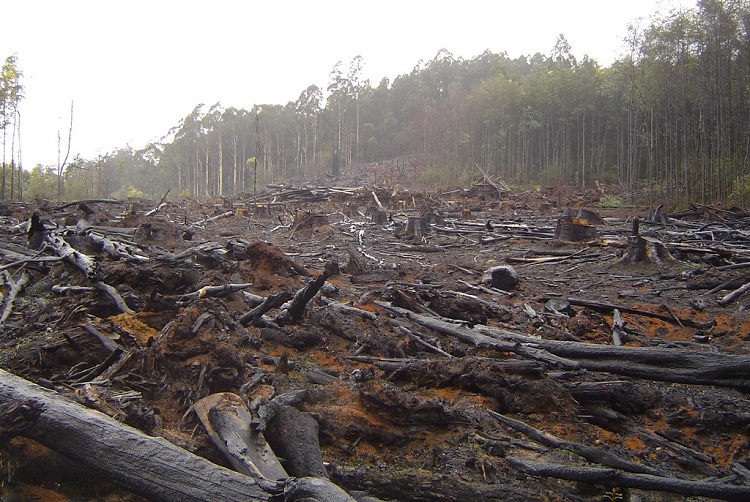
Although to say the future looks bright may be an overstatement and wishful thinking, the world is well aware of what taking out our trees is doing to us.
Leadership in every country has taken notice, and hopefully, backtracking can override some of the damage that will almost certainly continue.
Brazil Reduced Amazon Deforestation Rates by Two-Thirds from 2004 to 2012 (Nature)
Brazil has had to come to its knees in order to do something, but progress has been made. Although there are organizations that believe numbers have been skewed or cloaked, greater authorities believe this to be a fact.
Indonesia Has Also Reduced Its Deforestation Rates by 40% (WRI)
This percentage is in contrast to the average annual rate loss seen from 2002-2016.
“Indonesia seems to be moving in the right direction to achieve the forestry sector’s goals for the country’s Nationally Determined Contributions (NDCs) to the Paris Climate Agreement.” – World Resources Institute
Forest Loss Data Revealed Forest Cover Has Increased by 35% (NCBI)
Efforts made by the countries mentioned, as well as others, have made a difference. Although wildfires and drought can be controlled but not eliminated, mankind’s contribution to our current situation has created a larger problem.
Here Are Some Other Insights on Deforestation
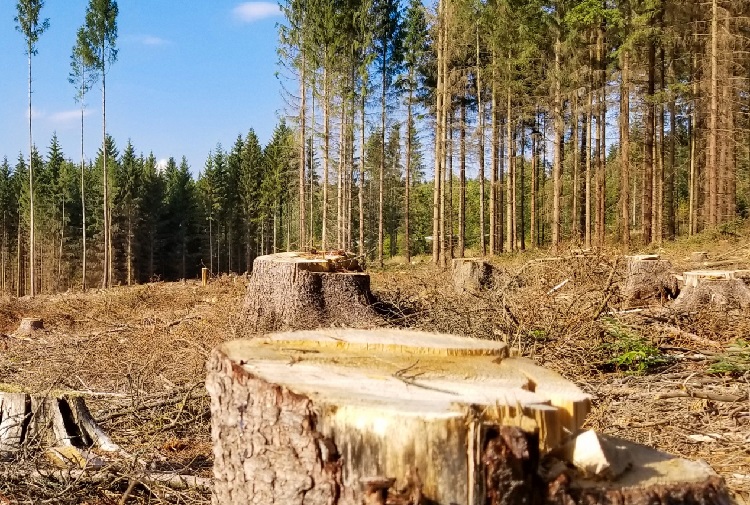
- The Food and Agricultural Organization (FAO) defines forest degradation or deforestation as; “the conversion of forest to other land uses (regardless of whether it is human-induced). “
- Oxford’s definition is; “the action of clearing a wide area of trees.”
- Chocolate and biscuits contribute greatly to deforestation (palm oil).
- More than two million trees have been planted by Tanzanians in the last decade to combat deforestation.
- Deforestation is the second-largest contributor to climate change. (After power generation)
- “More than half (54 percent) of the world’s forests are in only five countries –the Russian Federation, Brazil, Canada, the United States of America, and China.” – FAO
- Every second, a forest the size of a soccer field is cut down. (Let that sink in.)
- The unit of area used in deforestation is called “hectares,” which means; “a metric unit of square measure, equal to 100 ares (2.471 acres or 10,000 square meters).” [An “are” is 119.6 square yards.]
What Can We Do to Help Stop Deforestation?
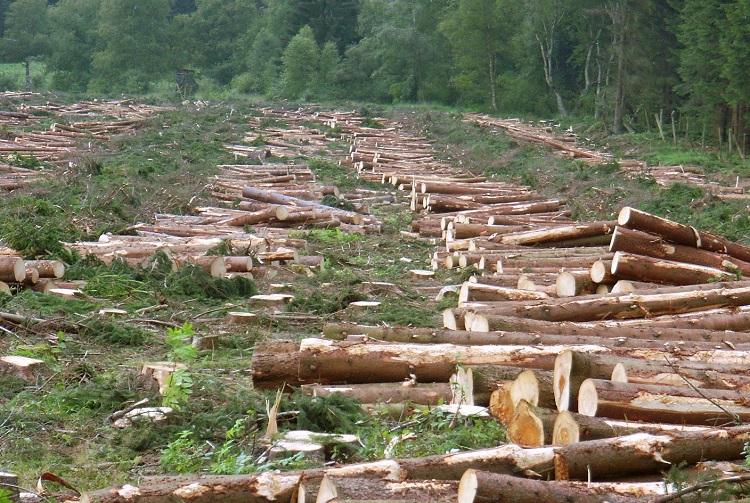
1. Go Paperless!
“Recycling paper is great, but saving paper by not printing at all will save your office money, use less water, conserve energy, and help preserve adult trees!” – the University of Illinois Chicago
2. Plant Trees
Reforestation and tree plantations benefit all of us. You can do everything from visiting your local state park to researching which areas need it most to having a tree-planting birthday party.
3. For One Day a Week, Go Vegetarian or Vegan
As a current vegetarian, I’m inadvertently helping the environment since stopping cruelty to animals was behind my decision. It really doesn’t matter the reasons why since not eating meat reduces the need for more, so even one day a week makes a difference by becoming a vegetarian.
4. Vote for Those Who Want to Focus on Solutions for Climate Change/Global Warming
There’s power in going to the polls to show up for our world. Use it.
5. Don’t Buy Products That Contain Palm Oil
This can reduce the need for it by hitting industries in their pockets. This isn’t an exhaustive list, but one that you can start on right now.
FAQs
What Is Deforestation?
It is the mass destruction of trees.
“Deforestation is the permanent removal of trees to make room for something besides forest. Deforestation can include clearing the land for farming or livestock or using timber for fuel, construction, or manufacturing.” – Live Science.
How Many Trees Are Lost to Deforestation Annually?
More than 15 billion trees are destroyed annually.
How Does Deforestation Affect Climate Change?
When trees are cut down, they release their carbon emissions back into the air, which also attacks the ozone. In fact, this situation has caused the actual trees to be the 3rd largest offender of emitting global greenhouse gases into the atmosphere. The irony is brutal.
What Is Reforestation?
Planting seeds or young trees to renew a forest. Our trees help fight climate change by removing carbon dioxide from the air, balancing biodiversity, serving as a habitat for plant and animal life, and more.
Which State Has the Most Forest Land?
Data from the latest year information was made available from the 50 states – in 2017. Here are the findings:
- Maine 89%
- New Hampshire, 83%
- West Virginia 79%
- Vermont 76%
- Alabama 71%
In Conclusion
These astronomical deforestation statistics negatively affect almost everything that exists on our planet in some way.
I intentionally didn’t speak about the controversy of climate change, the lobbyists for the beef, paper, and logging industries, or the political climate in any country because, frankly, none of that matters if we run out of our forest resources.
With some world issues, there’s absolutely nothing we can do to change things, but with this one, there is. To make progress in ending this travesty will take the persistence of one individual at a time. Be that person.


